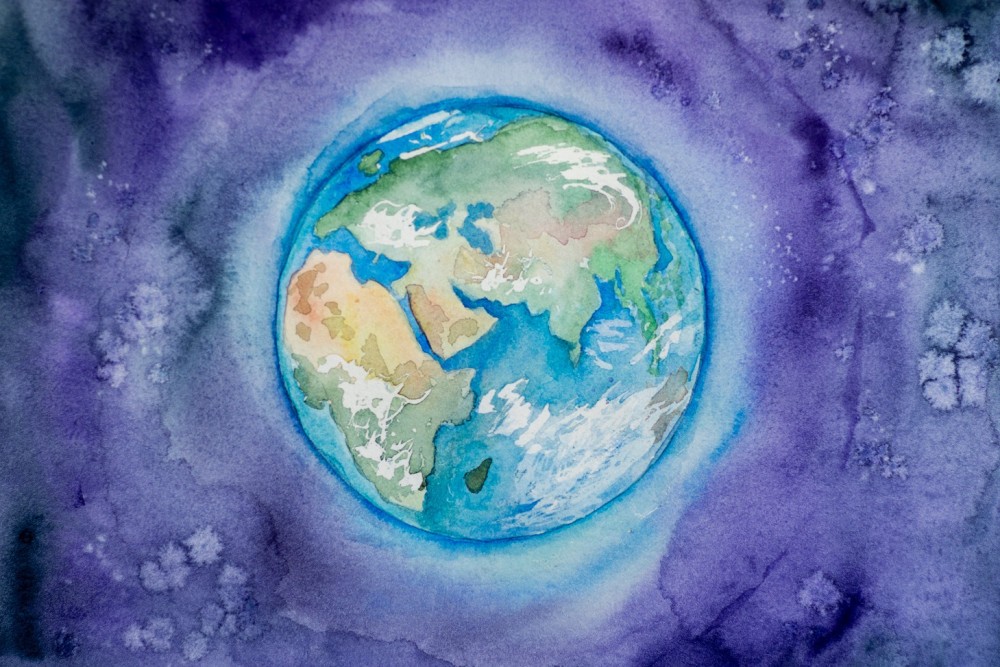The Earth we receive and the Earth we leave behind

International Mother Earth Day sounds like the perfect time to stop for a moment and meditate on how our actions affect the environment and what steps can be taken to improve the Earth we received and the Earth we leave behind. The idea of the United Nations when it proposed this day in 2009 was to raise awareness about the importance of caring for our planet and promoting environmental sustainability.
And it is here, in this discussion about how grains of sand form a beach, where we want to focus on the small but important contribution of satellite technology to study the environmental challenges we face and to find effective solutions.
I started working at GMV in the year 2000 and since then, the availability of geospatial data, derived or not from satellites, has increased exponentially both in quantity and quality. And not only that: our current capacity to process, understand and infer such a magnitude of data has also multiplied at the same level. Thanks to these capabilities, scientists have been able to study the climate and environment with unprecedented precision. These studies are being used to better understand climate change and should allow governments and international organizations to make decisions regarding mitigation and adaptation. It is no longer about discussing it, it is about mitigating the impact. To cite a few application examples:
-
Measurement of greenhouse gases. Satellites can measure concentrations of carbon dioxide, methane, and other greenhouse gases in the atmosphere.
-
Monitor air quality, which is directly related to human health and the environment. Satellites can measure the amount of different types of particles in the air and the concentration of pollutants such as nitrogen dioxide and ozone.
-
Monitoring of deforestation and degradation of forest masses, this is essential since the elimination of forests is one of the main causes of greenhouse gas emissions.
-
These previous points are directly related to carbon credits; these credits are a financial tool used to reduce greenhouse gas emissions globally. For the carbon credit system to work effectively, it is necessary to measure and monitor greenhouse gas emissions, but also to be able to estimate the amount of forests and other natural carbon sinks.
-
In addition, satellite data is also useful for monitoring compliance with international agreements such as the Paris Agreement. Countries that commit to reducing their emissions must report regularly on their progress in reducing emissions. Satellite data can be used to verify the accuracy of reports and to detect any possible non-compliance.
-
Monitoring of the temperature of the oceans and the atmosphere. Here the key is to understand the patterns of water circulation and how global warming is affecting ecosystems.
-
Detection of plastics in the oceans. An individual piece of plastic is not visible from satellite. However, it is very common for marine circulation to lead them to large aggregations, mixed with other materials. These aggregations could be remotely detected.
Another very important element of satellite data is that they allow us to have long time series of observations. These data collected at regular time intervals allow scientists to understand how the climate has changed and more importantly, how it is likely to change in the future.
For example, by analyzing time series of global temperatures, scientists have shown that the planet's average temperature has increased significantly in recent decades due to increases in greenhouse gases in the atmosphere. This data can also help identify patterns of extreme weather, such as droughts, floods, and storms, that are increasing in frequency and intensity due to climate change.
Data time series also allow evaluating the effectiveness of climate change mitigation policies and planning adaptation strategies based on expected climate changes. Here, we can analyze macro effects such as sea level rise, the impact on agricultural production, and large human movements.
Finally, we are not only talking about mitigating the effects of climate change, we also have to live with them. Floods, hurricanes, humanitarian crises such as armed conflicts and population displacements, which in some cases are related to climate change, require a rapid response. The small contribution of Earth observation consists in providing images to assess the impact of disasters and humanitarian crises. The images can show the damage caused by natural disasters, allowing response teams to better plan the distribution of resources and aid. The images can also be used to identify conflict-affected areas and to monitor population displacement.
At GMV we are committed to developing services that contribute and help in the knowledge and mitigation of climate change. Thus, we can mention:
-
Coordination of the ATIN-Blueco project, focused on blue economy: innovation clusters, management of Atlantic natural resources and maritime spatial planning, which aims to complement the Atlantic Regional Initiative.
-
Management of the World Soils project, which aims to develop a global Earth observation and soil monitoring system (EO-SMS).
-
Coordination of the World Emission project with the aim of improving the global emissions inventory service extracted from data from Earth observation satellites.
-
Participation in the ESA GDA (Global Development Assistance) program where we lead the Climate and Agriculture projects and participate in the Clean Energy and Water projects.
-
Leadership of the European Commission research project, MRV4SOC, aimed at developing monitoring standards for carbon sequestration in soil.
International Mother Earth Day reminds us that we have to take care of our shared home, and that we must remember that change begins with ourselves, we must work together and small actions will make a difference for future generations.
Authors: Antonio Tabasco Cabezas